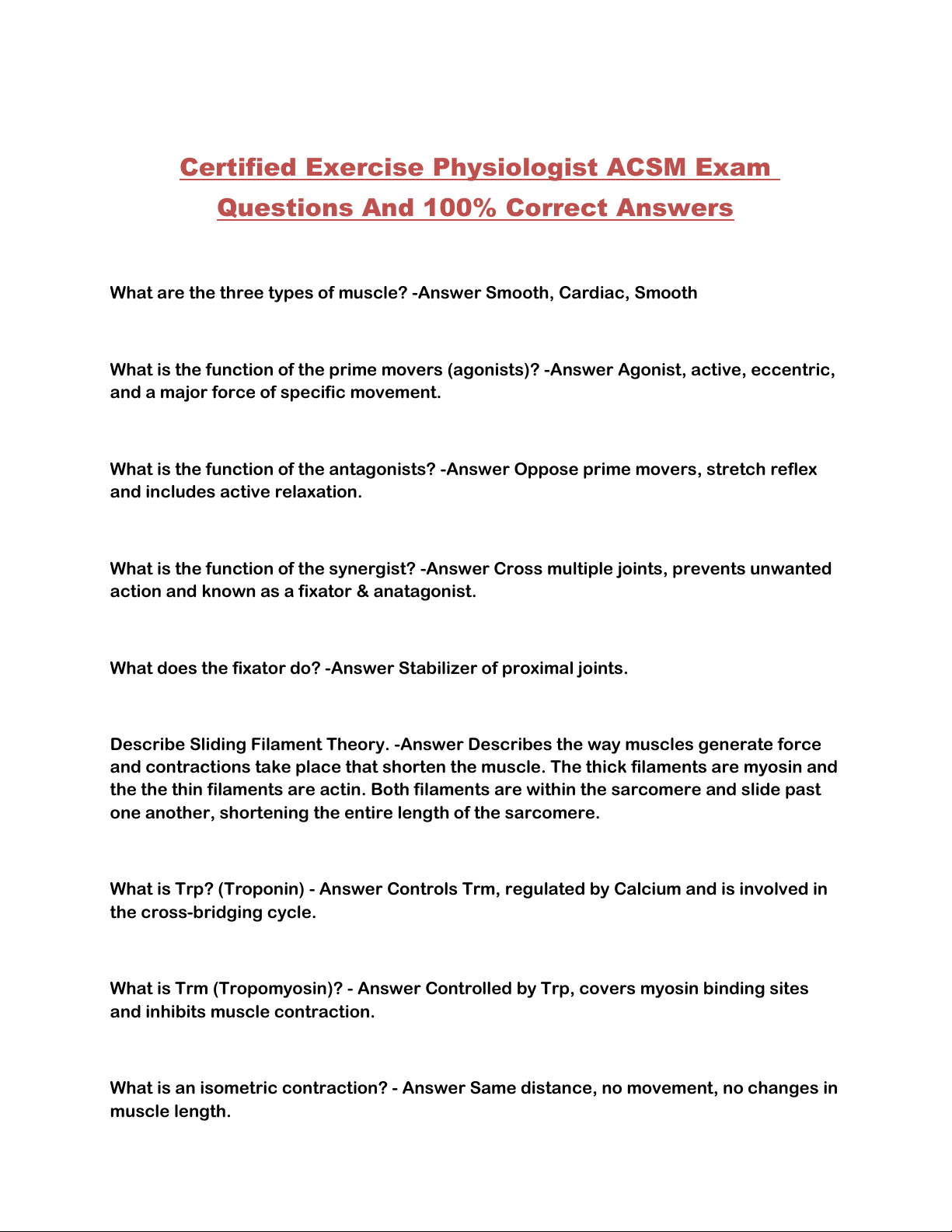
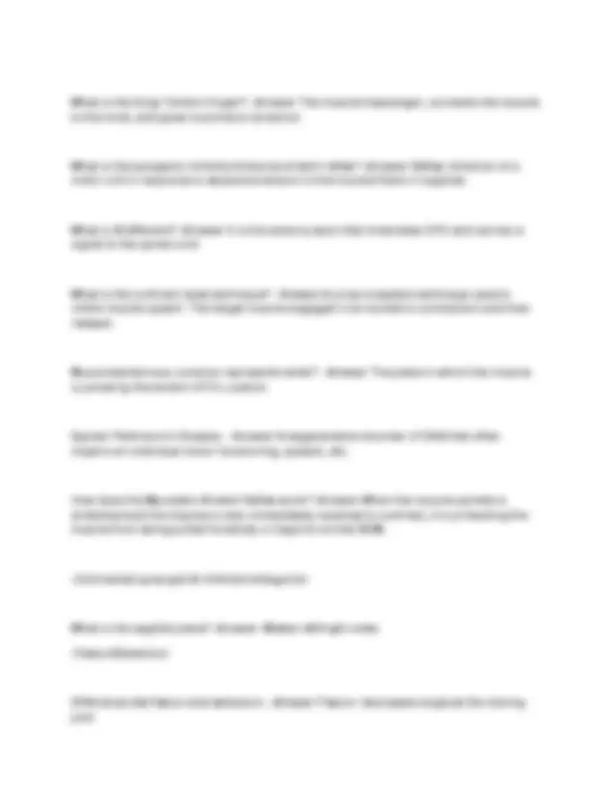
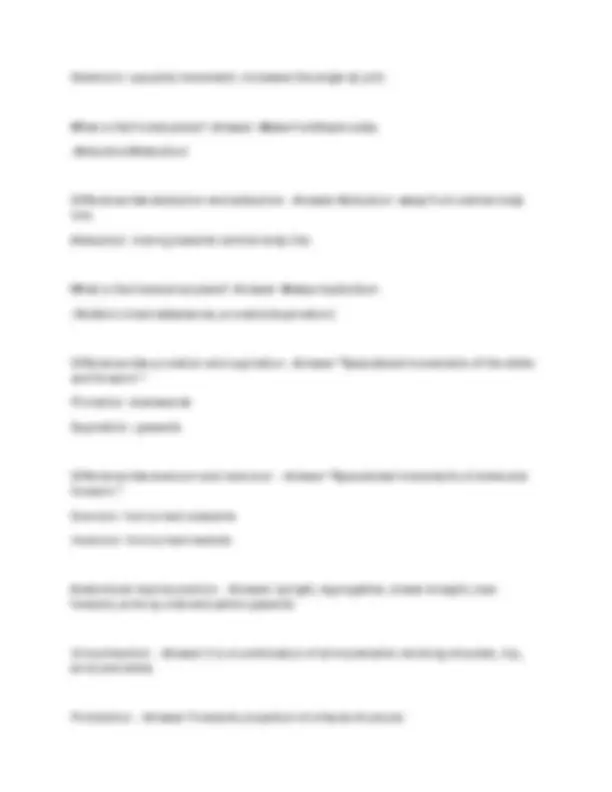
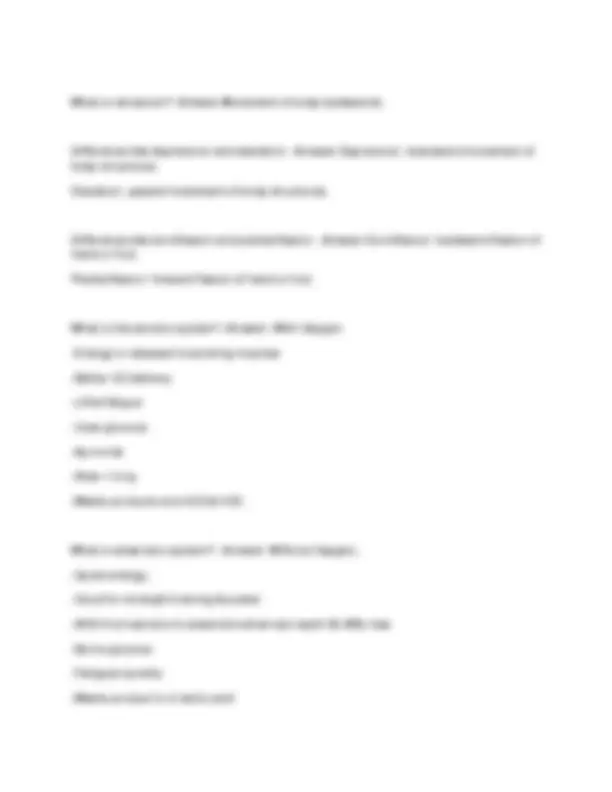
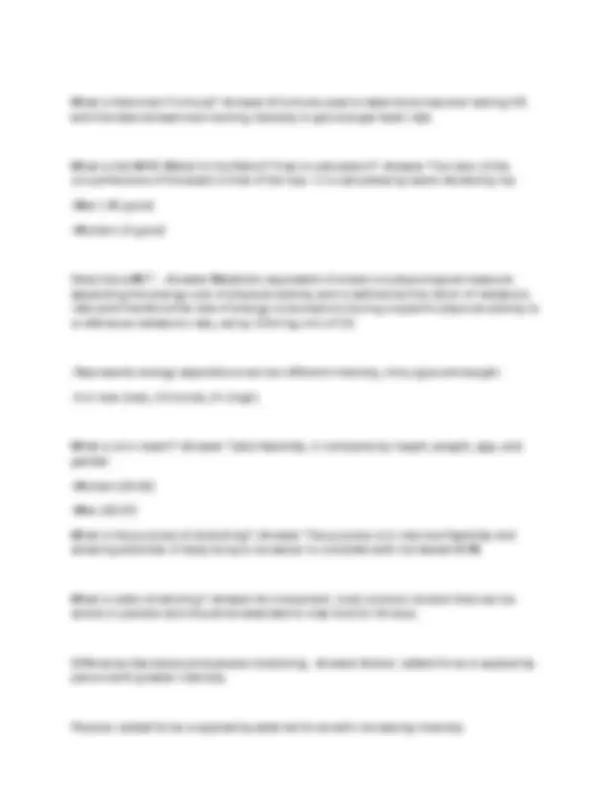
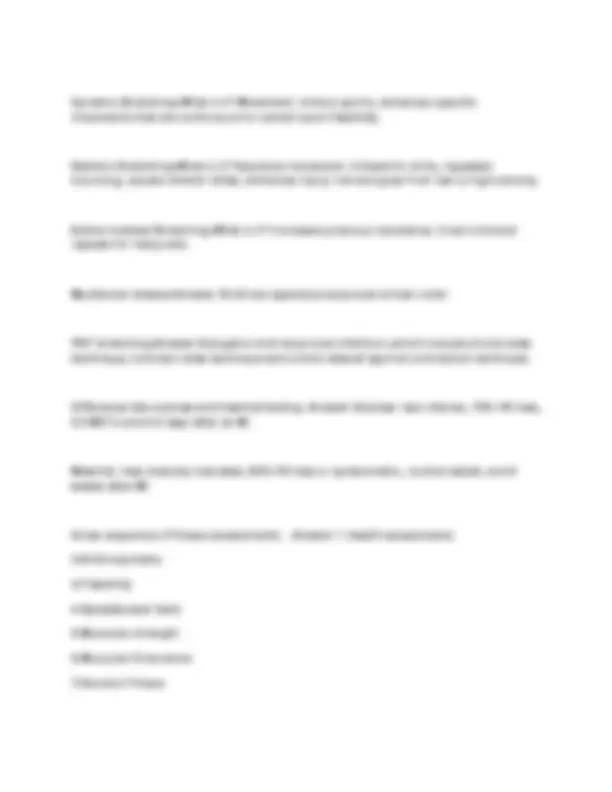
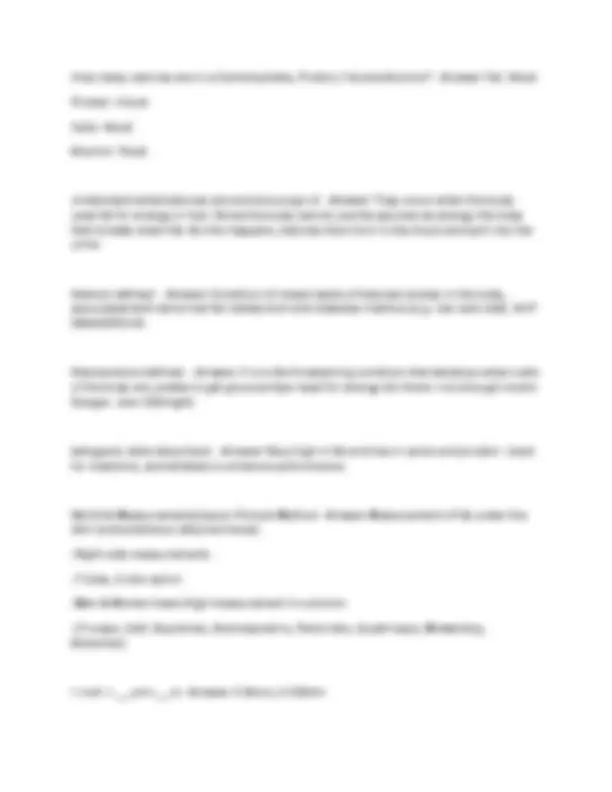
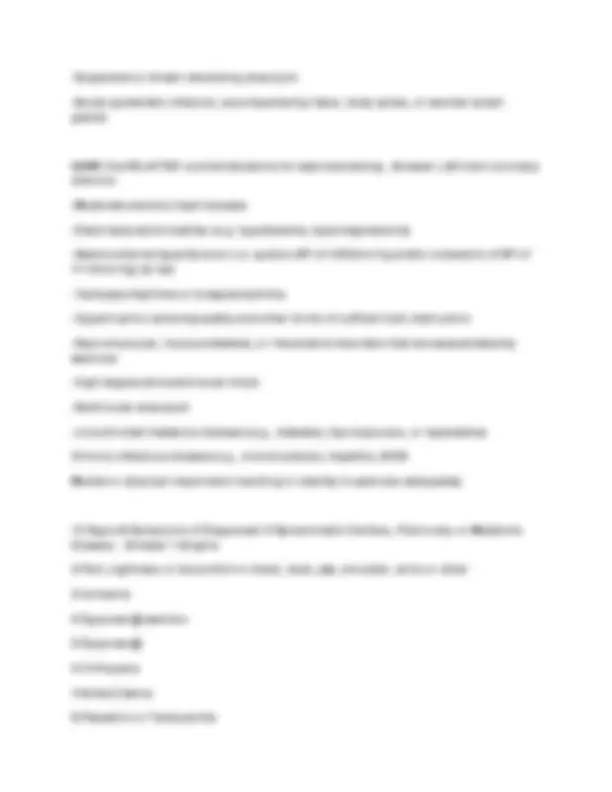
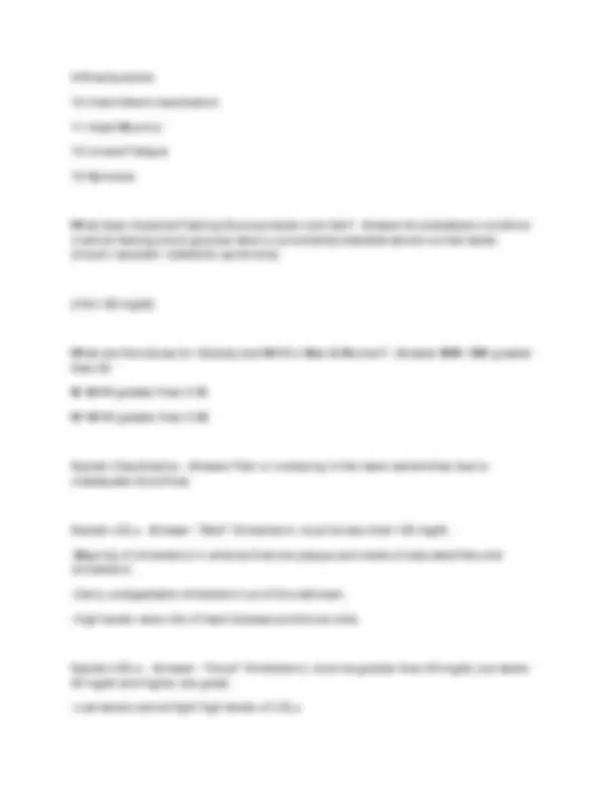
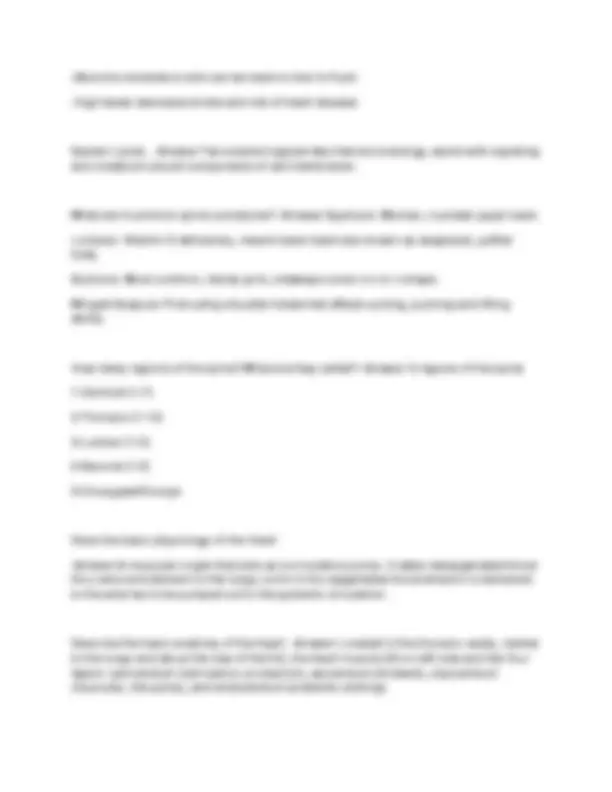
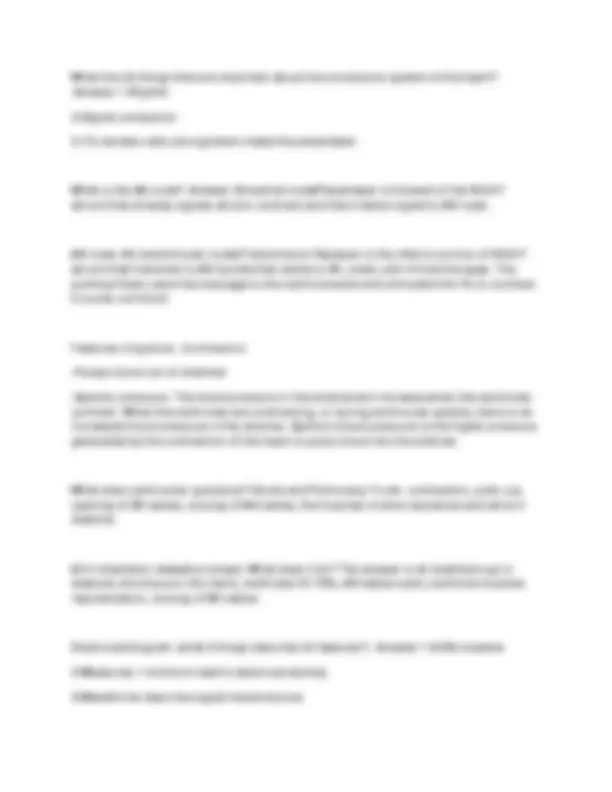
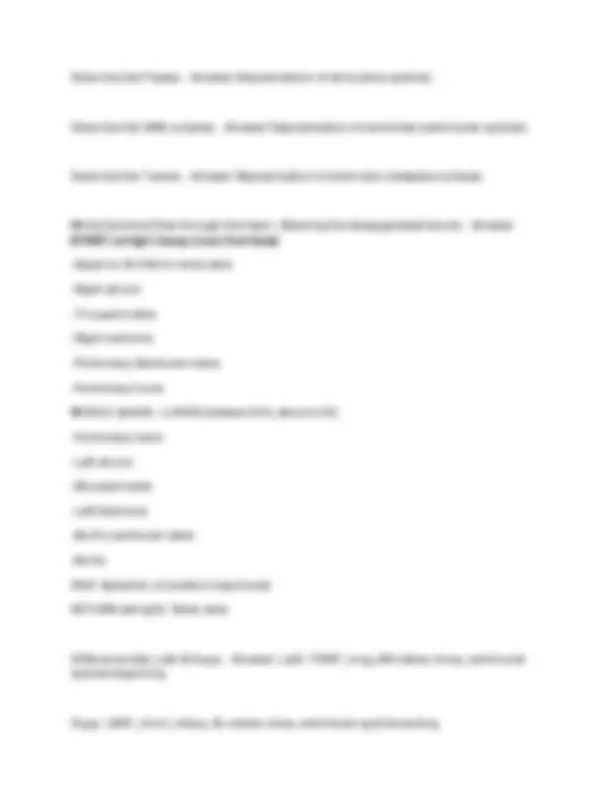
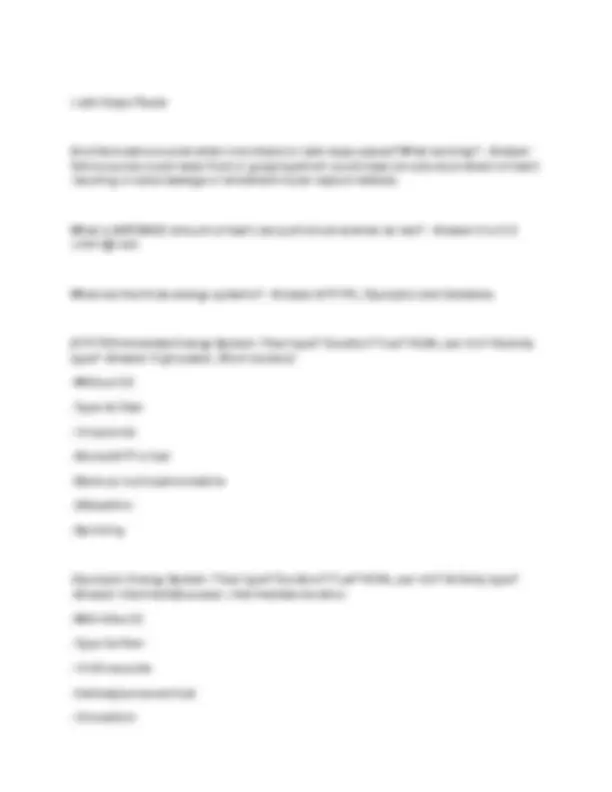
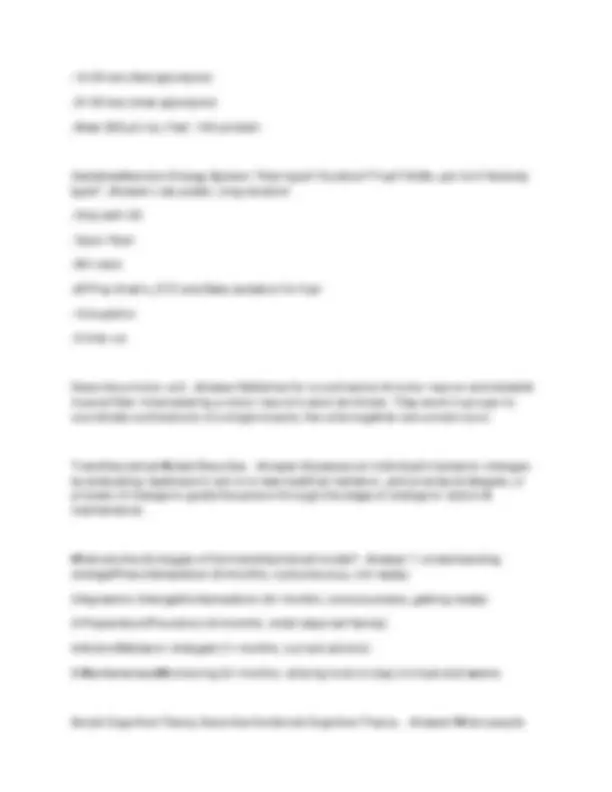
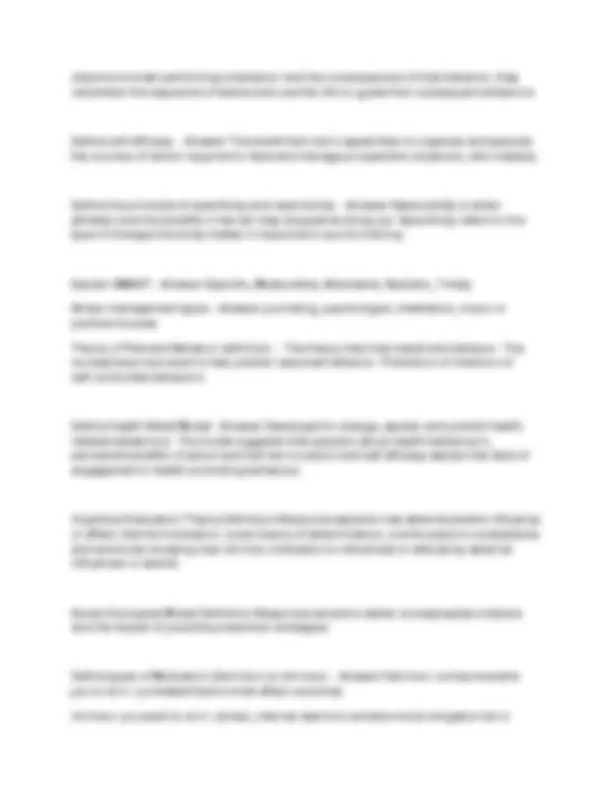
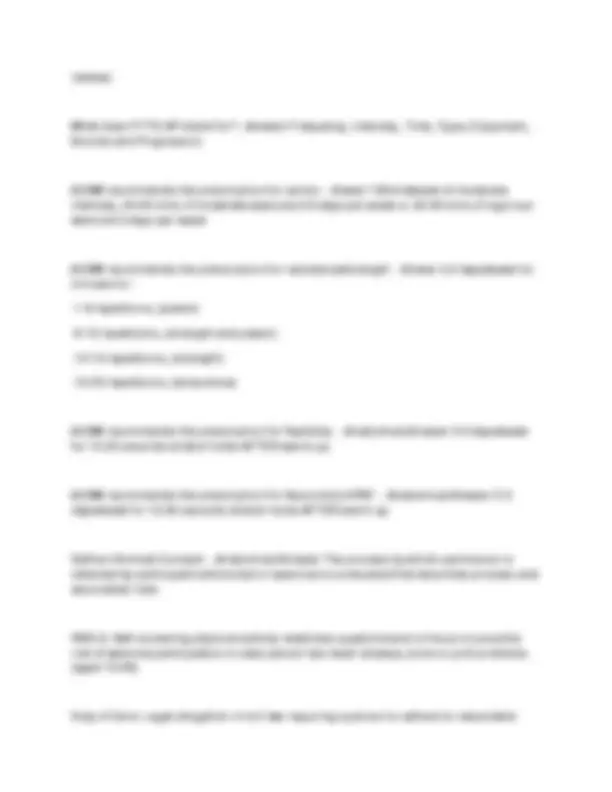
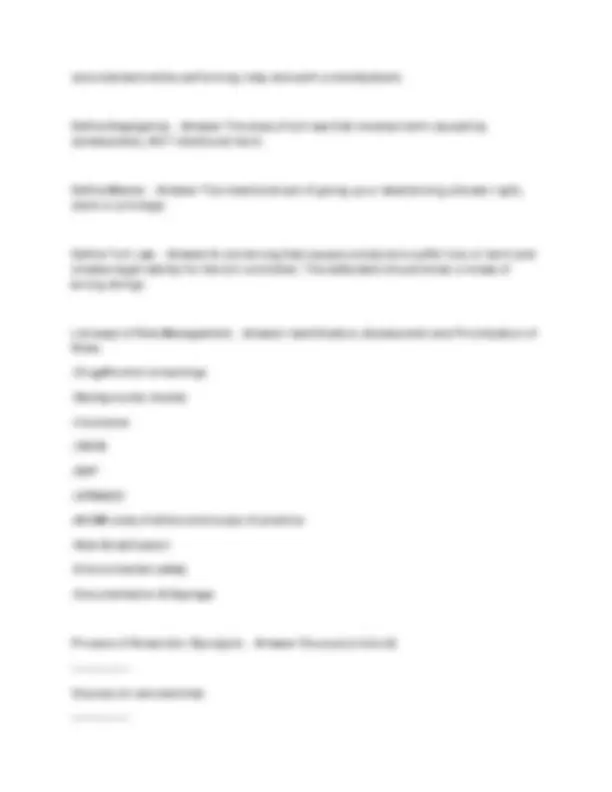
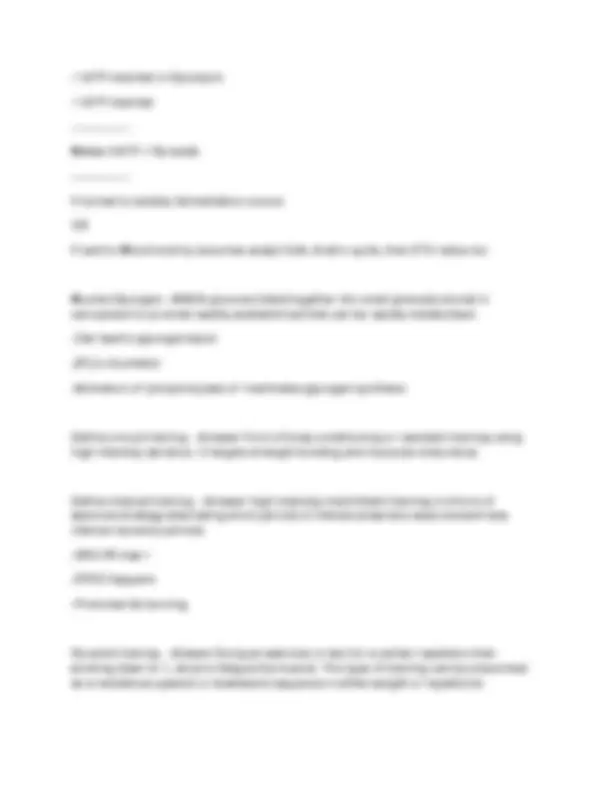
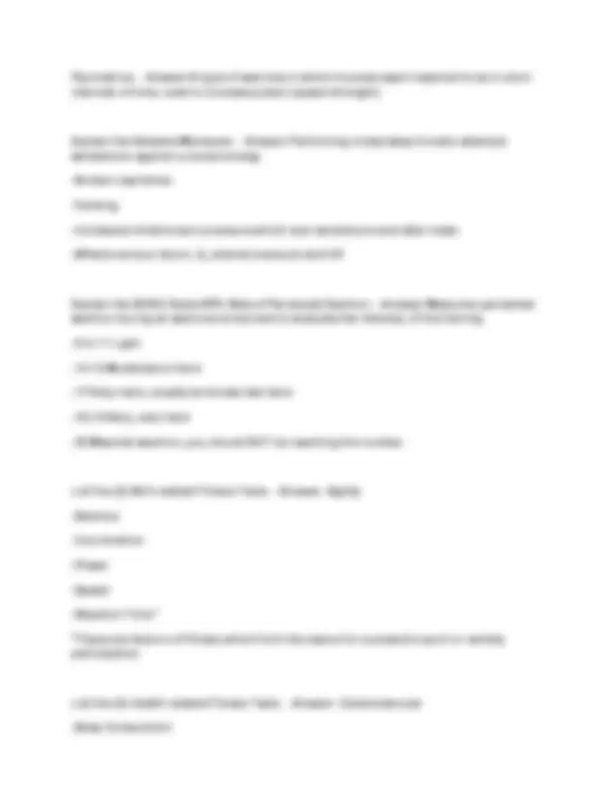
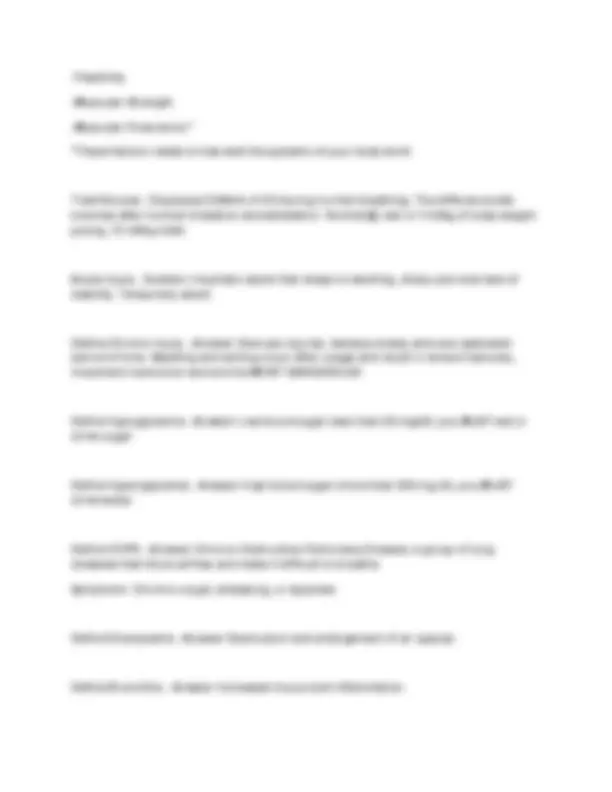
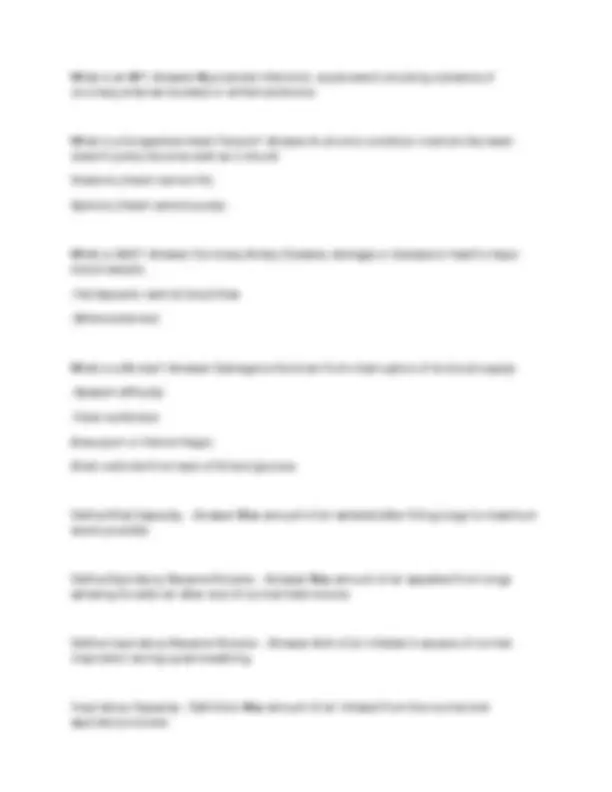
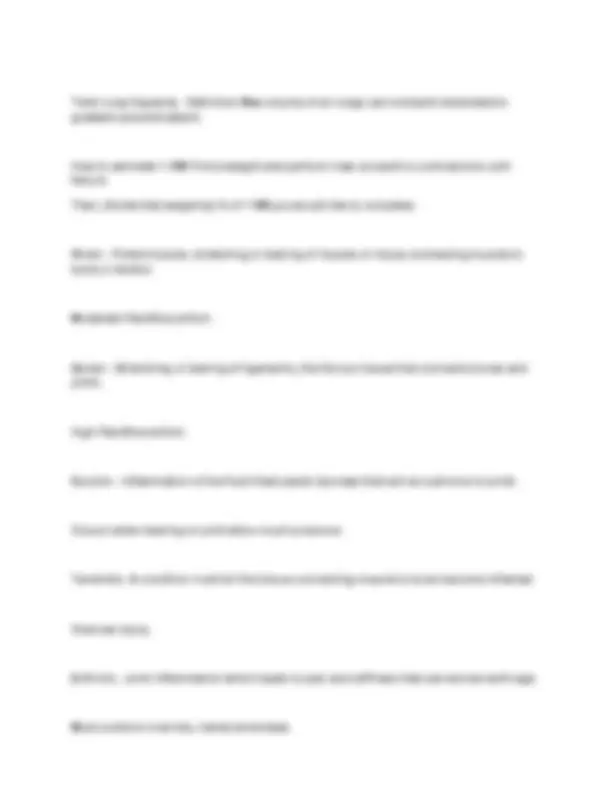
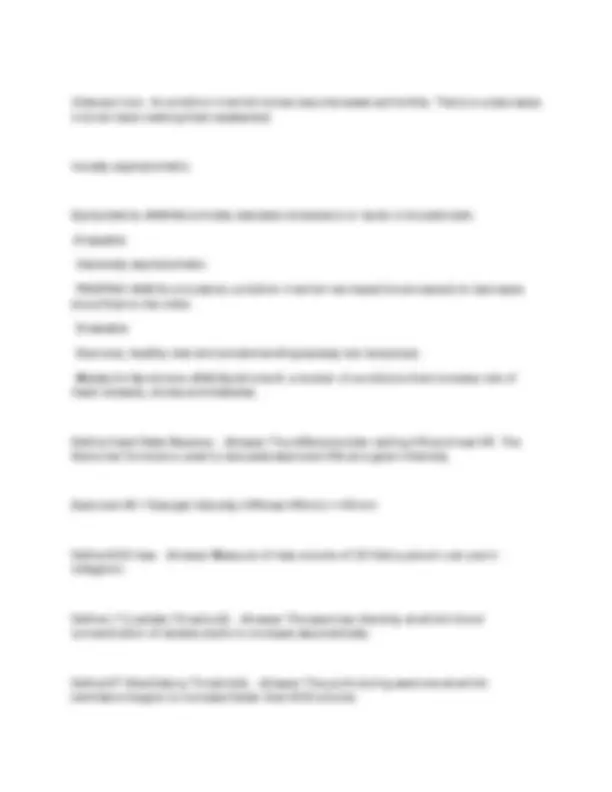
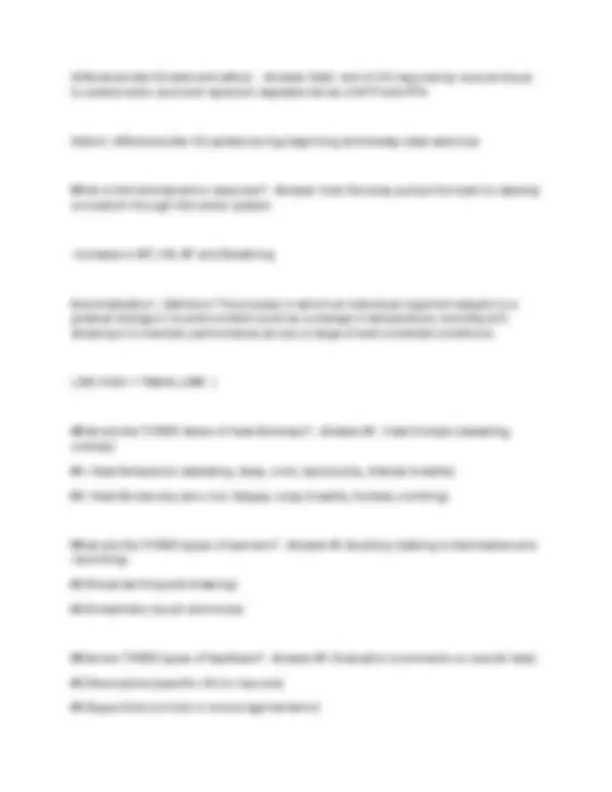
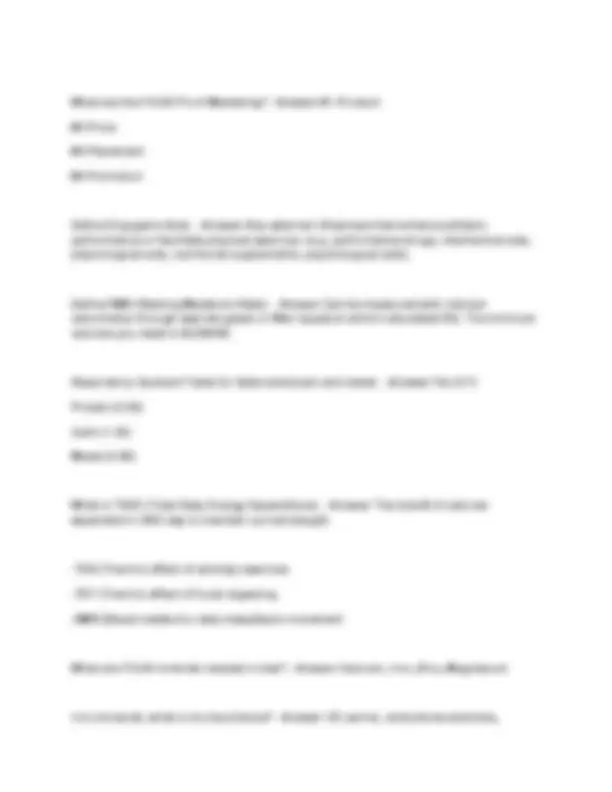
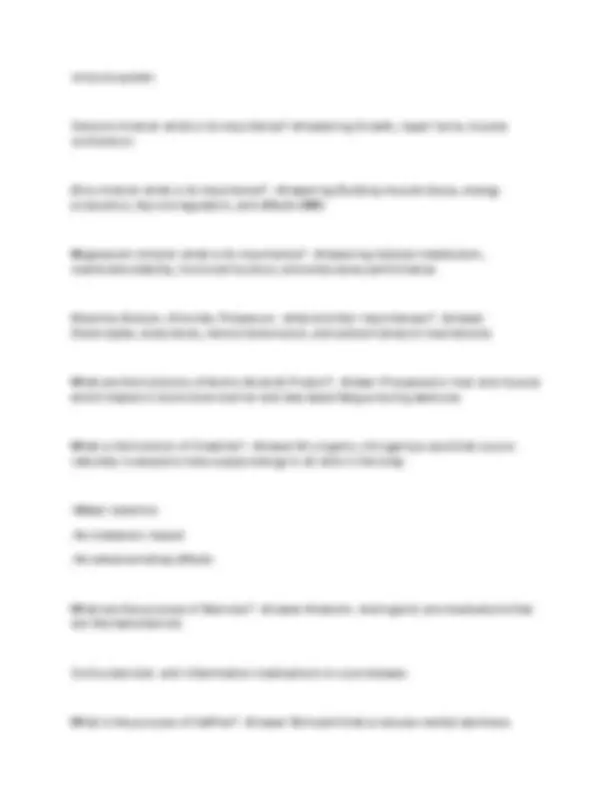
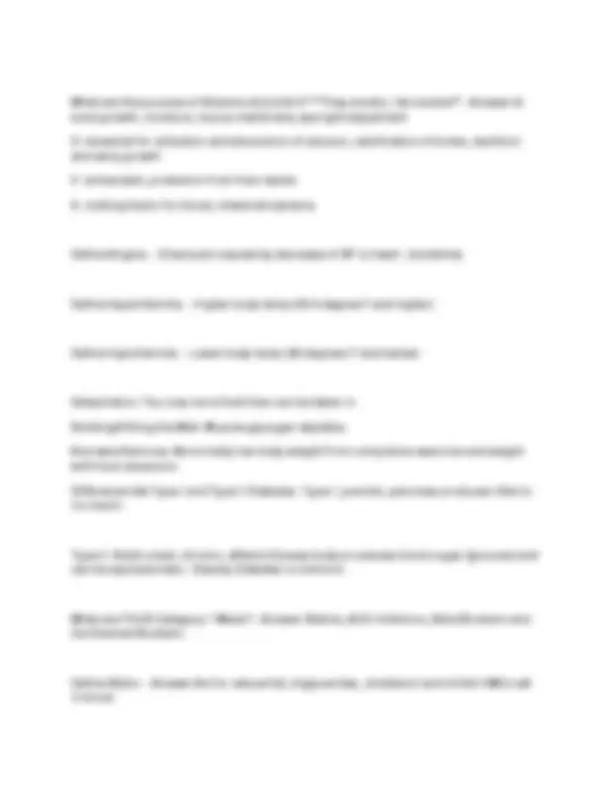
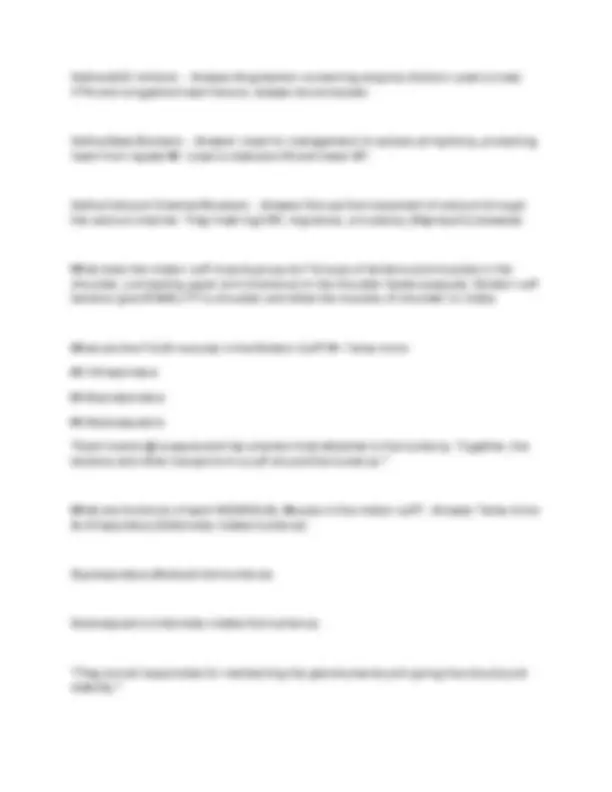


Study with the several resources on Docsity

Earn points by helping other students or get them with a premium plan


Prepare for your exams
Study with the several resources on Docsity

Earn points to download
Earn points by helping other students or get them with a premium plan
Community
Ask the community for help and clear up your study doubts
Discover the best universities in your country according to Docsity users
Free resources
Download our free guides on studying techniques, anxiety management strategies, and thesis advice from Docsity tutors
A comprehensive set of questions and answers related to the certified exercise physiologist (cep) exam administered by the american college of sports medicine (acsm). It covers a wide range of topics, including muscle physiology, types of contractions, muscle fiber types, neuromuscular control, biomechanics, exercise physiology, and assessment methods. A valuable resource for individuals preparing for the cep exam, offering insights into key concepts and providing a structured approach to understanding the subject matter.
Typology: Exams
1 / 35

This page cannot be seen from the preview
Don't miss anything!




























What are the three types of muscle? -Answer Smooth, Cardiac, Smooth
What is the function of the prime movers (agonists)? -Answer Agonist, active, eccentric, and a major force of specific movement.
What is the function of the antagonists? -Answer Oppose prime movers, stretch reflex and includes active relaxation.
What is the function of the synergist? -Answer Cross multiple joints, prevents unwanted action and known as a fixator & anatagonist.
What does the fixator do? -Answer Stabilizer of proximal joints.
Describe Sliding Filament Theory. -Answer Describes the way muscles generate force and contractions take place that shorten the muscle. The thick filaments are myosin and the the thin filaments are actin. Both filaments are within the sarcomere and slide past one another, shortening the entire length of the sarcomere.
What is Trp? (Troponin) - Answer Controls Trm, regulated by Calcium and is involved in the cross-bridging cycle.
What is Trm (Tropomyosin)? - Answer Controlled by Trp, covers myosin binding sites and inhibits muscle contraction.
What is an isometric contraction? - Answer Same distance, no movement, no changes in muscle length.
What is an isotonic contraction? - Answer Same tension, dependent on direction of movement and length changes, concentric vs eccentric.
What is an isokinetic contraction? - Same speed, contracts maximally, full ROM and increases muscle length.
What is a static exercise? - Answer Isometric, high strength & intensity and stationary.
What is a dynamic exercise? - Answer Isotonic, active ROM, slow & controlled movement and continuous movement.
Concentric vs eccentric? -Answer Concentric -Shortening, contraction. Eccentric- Lengthening, relaxation.
Type 1 Fiber - Answer Slow, oxidative fibers, tonic, aerobic exercise, resistant to fatigue and primarily used in distance runners.
Type 2A Fiber - Answer Intermediate, 1/2 oxidative 1/2 anaerobic, 75% fatigue resistant and used for intermediate sports.
Type 2X Fiber - Answer Fast,'Phasic', lots of glycogen, quick to fatigue, little mitochondria, capillaries and myoglobin primarily used by sprinters.
What muscle type has a mix of fiber types? - Answer Skeletal.
One motor unit contains how many fiber types? -Answer One.
If you train your body a certain way some _________ fiber types can become more type 1 or 2x depending on training. - Answer Type 2.
Extension: opposite movement; increases the angle at joint.
What is the frontal plane? -Answer -Make front/back sides. -Abduction/Adduction
Difference b/w abduction and adduction. -Answer Abduction: away from central body line. Adduction: moving towards central body line.
What is the transverse plane? -Answer -Makes top/bottom. -Rotation (internal/external, pronation/supination)
Difference b/w pronation and supination. -Answer Specialized movements of the ankle and forearm. Pronation: downwards Supination: upwards
Difference b/w eversion and inversion. - Answer Specialised movements of ankle and forearm. Eversion: foot turned outwards Inversion: foot turned inwards.
Anatomical neutral position. - Answer Upright, leg together, knees straight, toes forward, arms by side and palms upwards.
Circumduction. - Answer It is a combination of all movements involving shoulder, hip, wrist and ankle.
Protraction. - Answer Forwards projection of a facial structure.
What is retraction? -Answer Movement of body backwards.
Difference b/w depression and elevation. -Answer Depression: downward movement of body structures. Elevation: upward movement of body structures.
Difference b/w dorsiflexion and plantarflexion. -Answer Dorsiflexion: backward flexion of hand or foot. Plantarflexion: forward flexion of hand or foot.
What is the aerobic system? -Answer -With Oxygen. -Energy is released to working muscles -Better O2 delivery -Little fatigue -Uses glucose -Burns fat -Slow + long -Waste products are CO2 & H2O
What is anaerobic system? - Answer -Without Oxygen, -Quick energy, -Good for strength training & power -Shift from aerobic to anaerobic when we reach 50-85% max -Burns glucose -Fatigues quickly -Waste product is is lactic acid
-HIGH arterial pressure -140/90+
Name the short-term effects of cardio & resistance training. -Answer -Increase of HR, SV, Q, O2 demand, pH and BF
Name the long-term effects of cardio & resistance training. -Answer -Decrease in HR, BP -Increase in SV @ rest, # of capillaries, RBCs, Q, BV
Difference b/w warm-up & cool down. - Answer Warm-up: BEFORE, large muscle groups, increase BF, body temp, decrease soreness and injury risk.
Cool down: AFTER, continuation of workout, recovery, steady state, decrease HR, BP, BF.
Explain DOMS (Delayed Onset Muscle Soreness) - Answer Acute soreness, b/c of large unaccustomed force on eccentric movements, microtears, lasts 12-72 hrs.
What is BMI? How is it calculated? -Answer (kg-m); anthropometric measurement used to asses weight relative to height and is calculated by dividing the weight (kg) by height (m).
25+ >(overweight) 30+ >(obese) 35+ >(morbidly obese)
What is maximum HR? How is it calculated? -Answer The HR increase linearly as workload increases and has reached a max point. -Karvonen Formula (220-age)
What is Karvonen Formula? -Answer A formula used to determine max and resting HR with the desired exercise training intensity to get a target heart rate.
What is the WHR (Waist to Hip Ratio)? How to calculate it? -Answer The ratio of the circumference of the waist to that of the hips. It is calculated by waist divided by hip. -Men (.95 good) -Women (.8 good)
Describe a MET. - Answer Metabolic equivalent of a task is a physiological measure expending the energy cost of physical activity and is defined as the ration of metabolic rate (and therefore the rate of energy consumption) during a specific physical activity to a reference metabolic rate, set by 3.5ml.kg.min of O2.
-Represents energy expenditure across different intensity, time, type and weight. -3 or less (low), 3-6 (mod), 6+ (high)
What is sit-n-reach? -Answer Tests flexibility; it compares by height, weight, age, and gender. -Women (29-32) -Men (23-27) What is the purpose of stretching? -Answer The purpose is to improve flexibility and allowing activities of daily living to be easier to complete with increased ROM.
What is static stretching? -Answer No movement; most common stretch that can be active or passive and should be extended to max hold for 30 secs.
Difference b/w active and passive stretching. -Answer Active: added force is applied by person with greater intensity.
Passive: added force is applied by external force with increasing intensity.
How many calories are in a Carbohydrate, Protein, Fat and Alcohol? - Answer Fat: 9kcal Protein: 4 kcal Carb: 4kcal Alcohol: 7kcal
Understand what ketones are and are a sign of. -Answer They occur when the body uses fat for energy or fuel. Since the body cannot use the glucose as energy the body then breaks down fat. As this happens, ketones then form in the blood and spill into the urine.
Ketosis defined. - Answer Condition of raised levels of ketones bodies in the body, associated with abnormal fat metabolism and diabetes mellitus (e.g. low carb diet). NOT DANGEROUS.
Ketoacidosis defined. - Answer It is a life-threatening condition that develops when cells in the body are unable to get glucose thye need for energy b/c there i not enough insulin. Danger; over 250mg/dl.
ketogenic diets described. - Answer Very high in fat and low in carbs and protein. Used for medicine, and athletes to enhance performance.
Skinfold Measurements/Jason-Pollock Method - Answer Measurement of fat under the skin (subcutaneous adipose tissue). -Right side measurements -7 sites, 3-site option -Men & Women have thigh measurement in common -(Triceps, Calf, Suprailiac, Subscapularis, Pectoralis, Quadriceps, Midaxillary, Abdomen)
1 inch = ___cm=___m - Answer 2.54cm, 0.0254m
1 kg = ____lb - Answer 2.2lbs
1 Watt = ____kg/m/min - Answer 6kg/m/min
1 mph = ___m/min - Answer 26.8m/min
1 L of O2 per minute = _____kcal - Answer 5kcals
1 MET = _____ml/kg/min - Answer 3.5ml/kg/min
1 lb of fat = ______kcals - Answer 3500kcals
1 L = ______ml - Answer 1000ml
What factors measure risk stratification? - Answer Age, Family History, Smoking, Lifestyle, BMI, BP, Total Cholesterol, Fasting Glucose levels.
Low risk (1 point) Moderate Risk (2 or more points) High Risk (Diseased or Symptomatic) ****Subtract (1) point for HDL if greater than 60mg/dl.****
Client Age add +1 if. - Answer Male (greater than 45) Female (greater than 55)
Family History add +1 if. - Answer Major heart condition such as MI or bypass surgery for FATHER (younger than 55) or MOTHER (younger than 65).
-Suspected or known dissecting aneurysm -Acute systematic infection, accompanied by fever, body aches, or swollen lymph glands
NAME the RELATIVE contraindications for exercise testing. -Answer-Left main coronary stenosis -Moderate stenotic heart disease -Electrolyte abnormalities (e.g. hypokalemia, hypomagnesemia) -Severe arterial hypertension (i.e. systolic BP of >200mm Hg and/or a diastolic of BP of
110mm Hg) at rest -Tachydysrthythmia or bradydsrhythmia -Hypertrophic cardiomyopathy and other forms of outflow tract obstruction -Neuromuscular, musculoskeletal, or rheumatoid disorders that are exacerbated by exercise -High degree atrioventricular block -Ventricular aneurysm -Uncontrolled metabolic disease (e.g., diabetes, thyrotoxicosis, or myxedema) Chronic infectious disease e.g., mononucleosis, hepatitis, AIDS Mental or physical impairment resulting in inability to exercise adequately
13 Signs & Symptoms of Diagnosed of Symptomatic Cardiac, Pulmonary or Metabolic Disease. - Answer 1-Angina 2-Pain, tightness or discomfort in chest, neck, jaw, shoulder, arms or other 3-Ischemia 4-Dypsnea @ exertion 5-Dyspnea @ 6-Orthopena 7-Ankle Edema 8-Palpation or Tachycardia
9-Brachycardia 10-Intermittent claudication 11-Heart Murmur 12-Unusal Fatigue 13-Syncope
What does Impaired Fasting Glucose levels look like? - Answer A prediabetic condition in which fasting blood glucose level is consistently elevated above normal levels. (Insulin resistant: metabolic syndrome)
[100-125 mg/dl]
What are the values for Obesity and WHR in Men & Women? - Answer M/W: BMI greater than 30 M: WHR greater than 0. W: WHR greater than 0.
Explain Claudication. -Answer Pain or cramping in the lower extremities due to inadequate blood flow.
Explain LDLs. -Answer -"Bad" Cholesterol; must be less than 130 mg/dl. -Majority of cholesterol in arteries that are plaque and made of saturated fats and cholesterol. -Carry undigestable cholesterol out of bloodstream. -High levels raise risk of heart disease and blood clots.
Explain HDLs. - Answer -"Good" Cholesterol; must be greater than 40 mg/dl, but levels 60 mg/dl and higher are great. -Low levels cannot fight high levels of LDLs.
Describe the RIGHT side of the heart. -Answer -Pumps to lungs -Smaller -Deoxy blood -Thinner layer
Describe the LEFT side of the heart. - Answer -Pumps to systemic circulation -Larger -Oxy blood -Thickest layer
Describe the Ventricles (Airplanes). - Answer -Thick -Pumping chambers to lungs and entire body -Larger -Stronger -Sending out -Connected to arteries to carry AWAY from heart
Describe the Atria (Taxi). - Answer -Thin -Small distance to pump -Smaller -Receiving chambers -Connected to veins
Describe the (2) Chambers of Right Side, Right Atrium & Ventricle. - Answer -Smaller -Less myocardium -Maintains pulmonary circulation to lungs
Explain the (2) Chambers of Left Side, Left Atrium & Ventricle. - Answer -Larger -2/3 myocardium -Pumps blood to extremities in systemic circulatory loop
Are valves of the heart a two-way street? (T/F) - Answer False, they are a one-way street.
Explain function of AV (atrioventricular valve). - Answer -Middle of heart -BF from atria to ventricles -Chordae tendinae PULL on AV valve to prevent backward folding. -During CONTRACTION, ventricles make AV valves look like domed parachutes.
Describe function of the (2) types of AV valves. - Answer Right Side: Tricuspid Left Side: Mitral/Bicuspid valve -Both are attached to ventricular side to chordae tendinae to prevent backflow.
Describe function SL (semilunar valves). - Answer -Crescent shaped cusps -Right/Left side b/w ventricles and atria -Smaller -No chordae tendinae -Use BP to snap shut Describe the function of the (2) types of SL valves. - Answer Right Side: pulmonary valve that prevents backflow from pulmonary trunk into right ventricle. Left Side: aortic valve that prevents aorta from backflow into left ventricle. -Both are crescent shaped. What are coronary systole and diastole? - Answer These are the two states that the (4) chambers of the heart that may be happening.
Describe the P wave. - Answer Depolarization of atria (atria systole).
Describe the QRS complex. - Answer Depolarization of ventricles (ventricular systole).
Describe the T wave. - Answer Repolarization of ventricles (relaxation phase).
Write the blood flow through the heart. (Starting the deoxygenated blood). - Answer
-Superior & Inferior vena cava -Right atrium -Tricuspid valve -Right ventricle -Pulmonary Semilunar valve -Pulmonary trunk MIDDLE (w/left): LUNGS [release CO2, absorb O2) -Pulmonary veins -Left atrium -Bicuspid valve -Left Ventricle -Aortic semilunar valve -Aorta END: Systemic circulation (oxy blood) RETURN (w/right): Vena cava
Difference b/w Lubb & Dupp. - Answer Lubb: FIRST, long, AV valves close, ventricular systole beginning.
Dupp: LAST, short, sharp, SL valves close, ventrivular systole ending.
Lubb-Dupp-Pause
Are there extra sounds when one listens to lubb-dupp-pause? What are they? - Answer Extra sounds could mean fluid or gurgling which could mean structural problem of heart resulting in valve leakage or atrial/ventricular septum defects.
What is AVERAGE amount a Heart can push blood at when at rest? - Answer 5 to 5. L/min @ rest.
What are the three energy systems? - Answer ATP-PC, Glycolytic and Oxidative.
ATP-PC/Immediate Energy System: Fiber type? Duration? Fuel? KCAL per min? Activity type? -Answer High-power, Short duration -Without O -Type IIx fiber -12 seconds -Stored ATP is fuel -Back-up is phosphocreatine -36kcal/min -Sprinting
Glycolytic Energy System: Fiber type? Duration? Fuel? KCAL per min? Activity type? -Answer Intermediate power, Intermediate duration -With little O -Type IIa fiber -12-50 seconds -Carbs/glucose are fuel -16 kcal/min